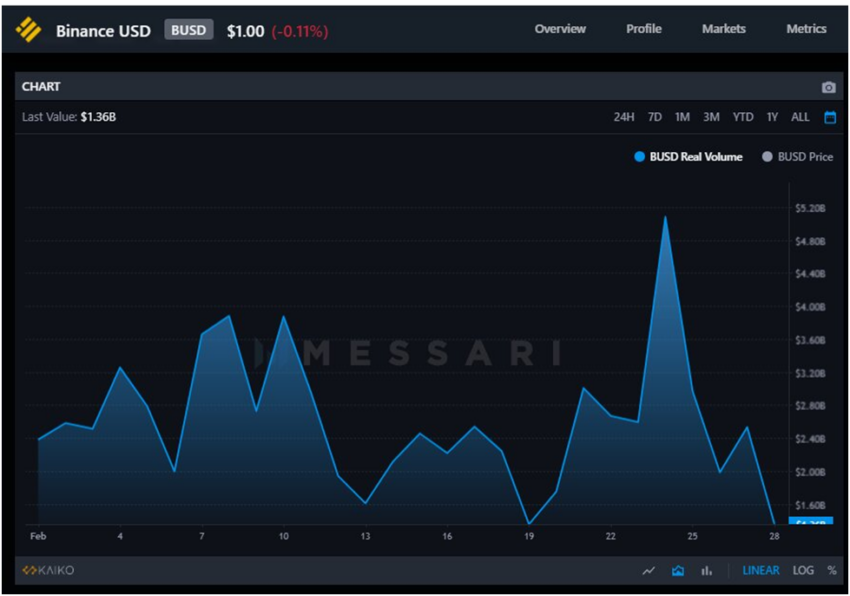United States Dollar Coin (USDC) took a backseat in real volume (TRV) during February as Binance United States Dollar (BUSD) saw a 51% increase in real volume over USDC.
February proved to be a difficult month for USDC, bringing in approximately $49 billion in real volume, according to Be[In]Research. While the figure is relatively large, compared to other stablecoins, the TRV for USDC and BUSD was down $1.2 trillion – a staggering 90% decrease in TRV compared to January 2021’s figures.
USDC still on the rise
The decrease in real volume over the last month would have had little effect on the demand for stablecoins. Since February of last year, USDC’s TRV was up 23%, sitting at approximately $39.7 billion.

USDC’s single-day high plummeted by $611 billion
In addition to USDC’s increasing TRV, its single-day high was still 11% higher than its highest day in February.
As of last month, the single-day high rested at $3.7 billion in TRV, compared to $3.3 billion in February 2021.
BUSD outpaces USDC
While USDC managed $49 billion in February volume, Binance USD (BUSD) managed to record approximately $74 billion.
In contrasting fortunes to USDC, the TRV decreased by 89% from January 2022, with BUSD sitting at $682 billion. Its TRV also saw a year-on-year monthly decrease for February, compared to February’s $99 billion last year – a 25% decrease.

Do traders prefer BUSD?
Tether (USDT) remains the top stablecoin by market capitalization, holding the title as the second-largest stablecoin by market cap as of press time. However, as of February, BUSD seems to be the clear favorite after USDT – at least by TRV metrics.
In January, USDC experienced a 0.91% increase over BUSD, having 51% more real volume than USDC.
But why?
Transaction counts and average transactional volume can be credited as the key attributes for the contrasting fortunes in real volumes, according to Be[In]Crypto Research. Based on calculations, the total transaction count for USDC for February 2022 was more than 1.1 million, while BUSD had over 22,000 transactions.
If the transaction count for USDC is more than BUSD, then why is BUSD’s real volume 51% greater than USDC?
Although USDC recorded 4,900% more in total transaction counts in February than BUSD, their average transaction value was relatively lower.
Looking back to February 24, both stablecoins recorded single-day high transaction counts, which coincided with Russia deciding to conduct an unprovoked invasion of Ukraine that same day, leading to a plunge in the price of crypto everywhere.
The bearish outlook of the market led to a spike in the demand for stablecoins. By the end of the day, the transaction count for USDC and BUSD was 74,568 and 1,388, respectively. Evidently, this yielded an average transactional value of $150,000 on the day for USDC, as illustrated below.

On the other hand, the average transaction counts of $1.01 million for BUSD on the day.

Since real volume constitutes the accumulation of daily transaction volumes, which brings about average transactional counts, this would explain why there was a decrease in real volume of USDC (although it had more transactional counts).
As uncertainty surrounding the ongoing events in the Russia-Ukraine conflict continues, March should experience more impressive TRV figures.
What do you think about this subject? Write to us and tell us!
Disclaimer
In line with the Trust Project guidelines, this price analysis article is for informational purposes only and should not be considered financial or investment advice. BeInCrypto is committed to accurate, unbiased reporting, but market conditions are subject to change without notice. Always conduct your own research and consult with a professional before making any financial decisions. Please note that our Terms and Conditions, Privacy Policy, and Disclaimers have been updated.


